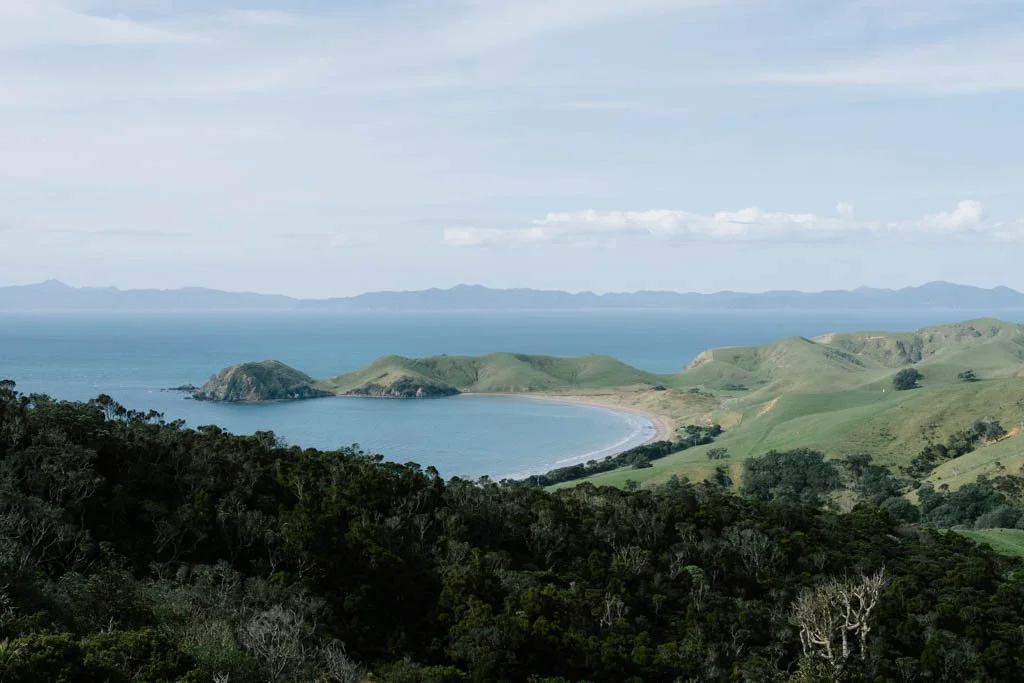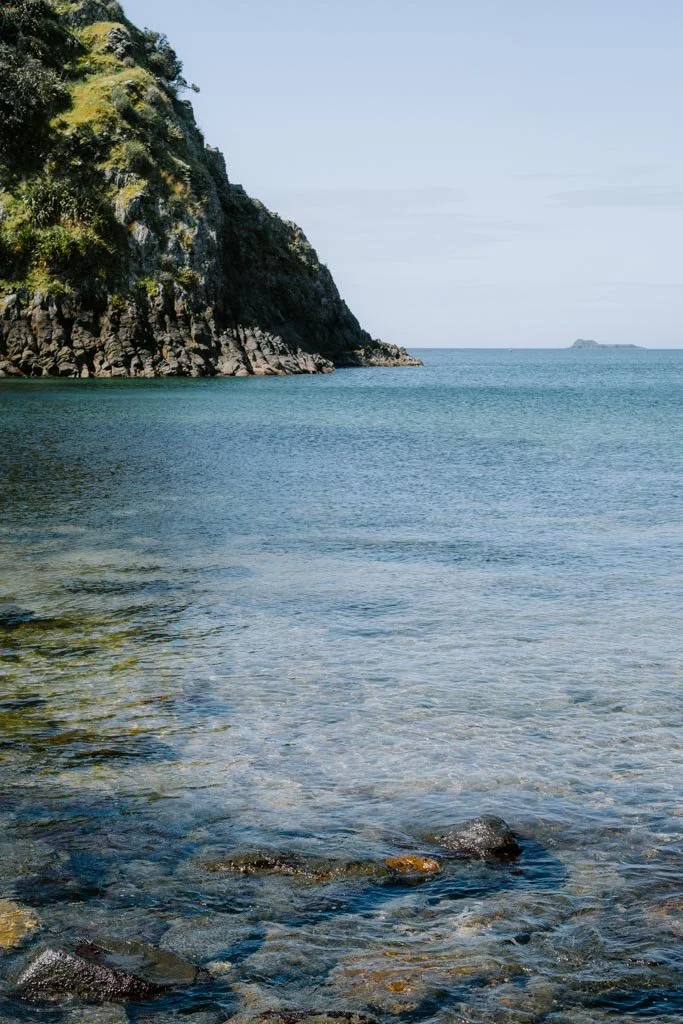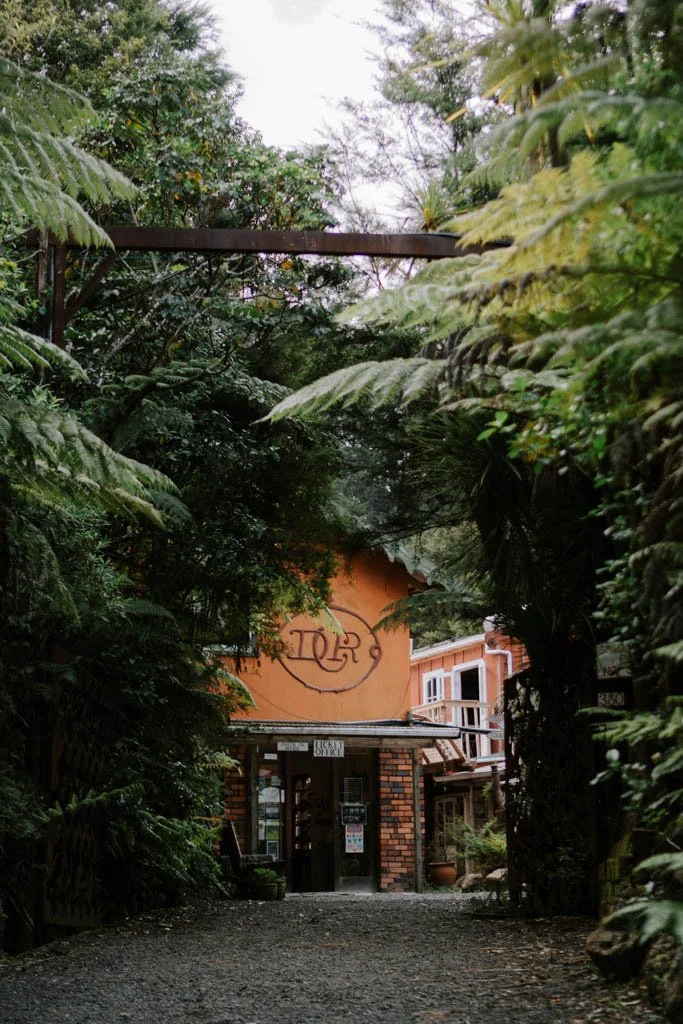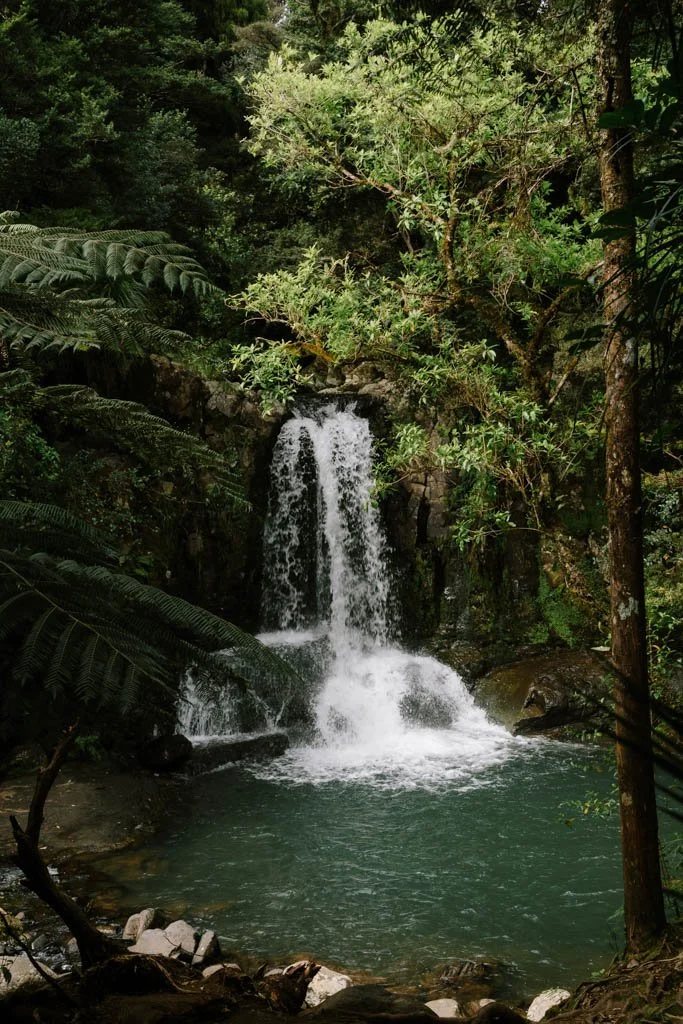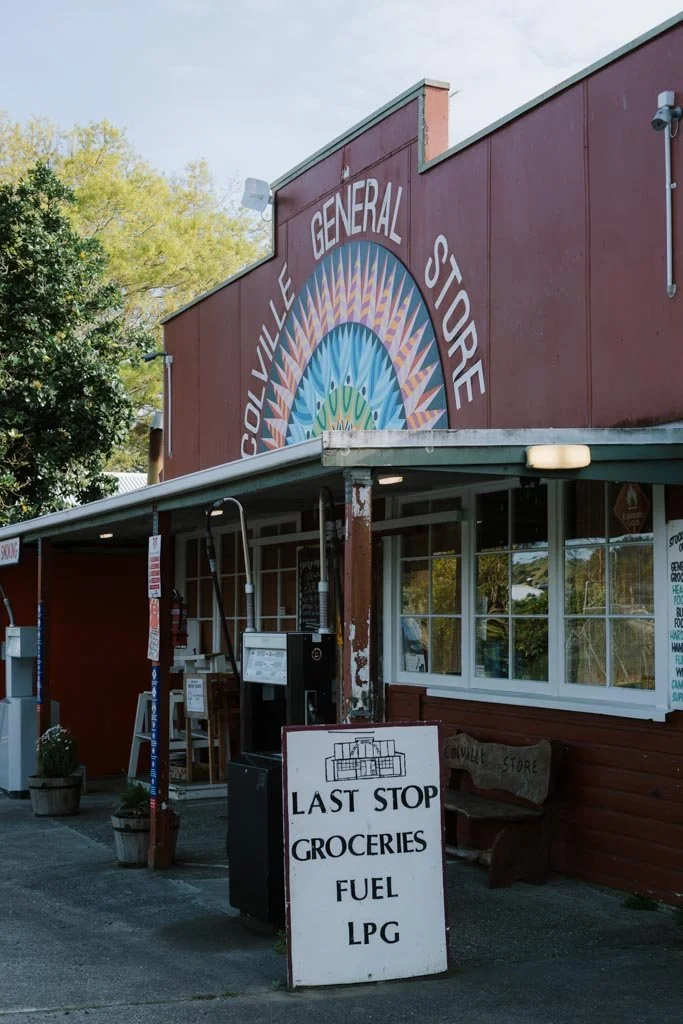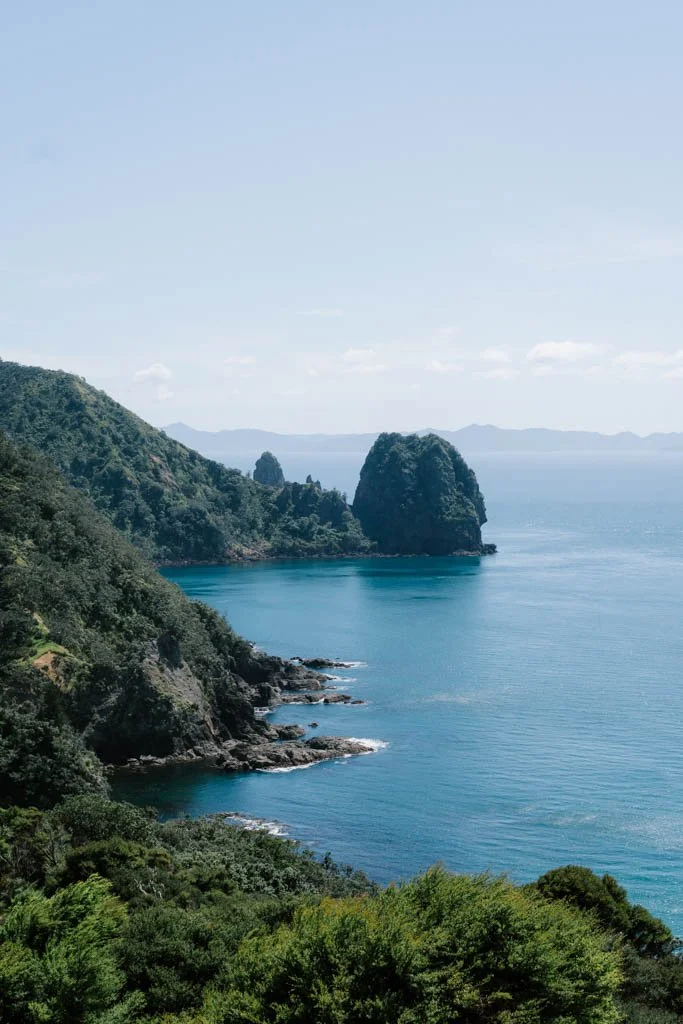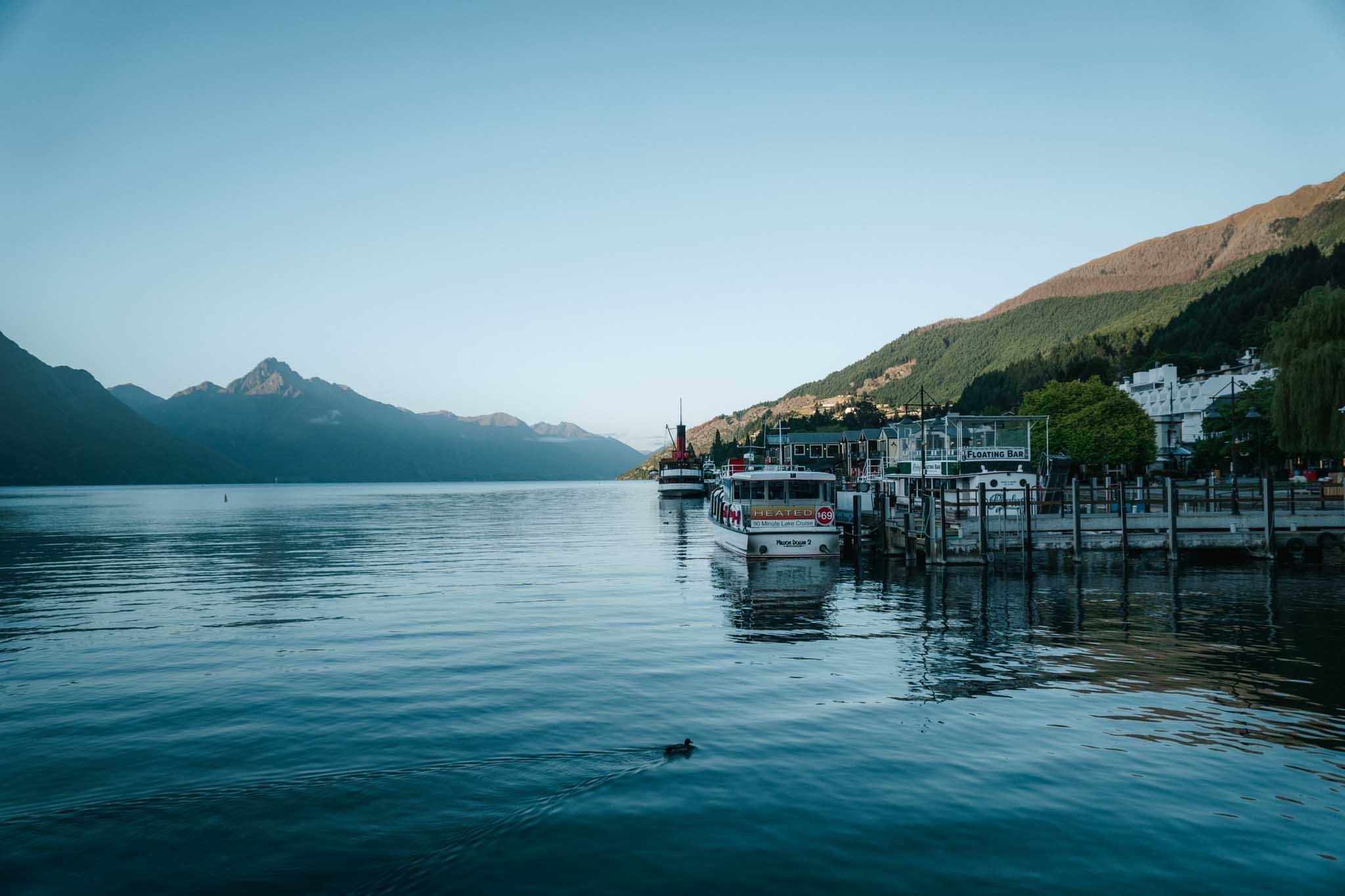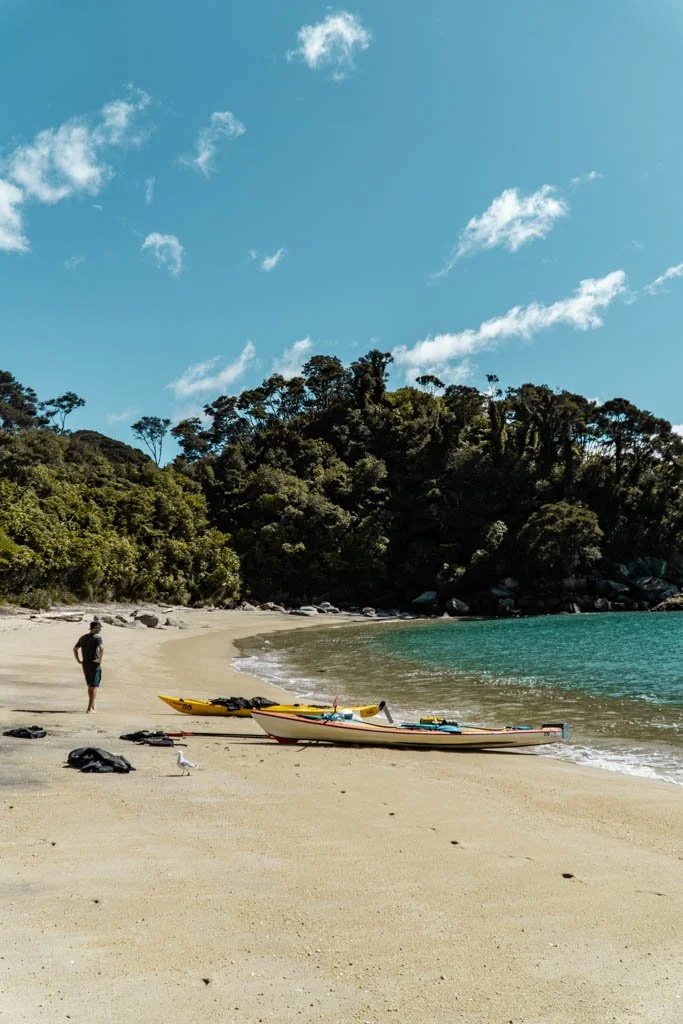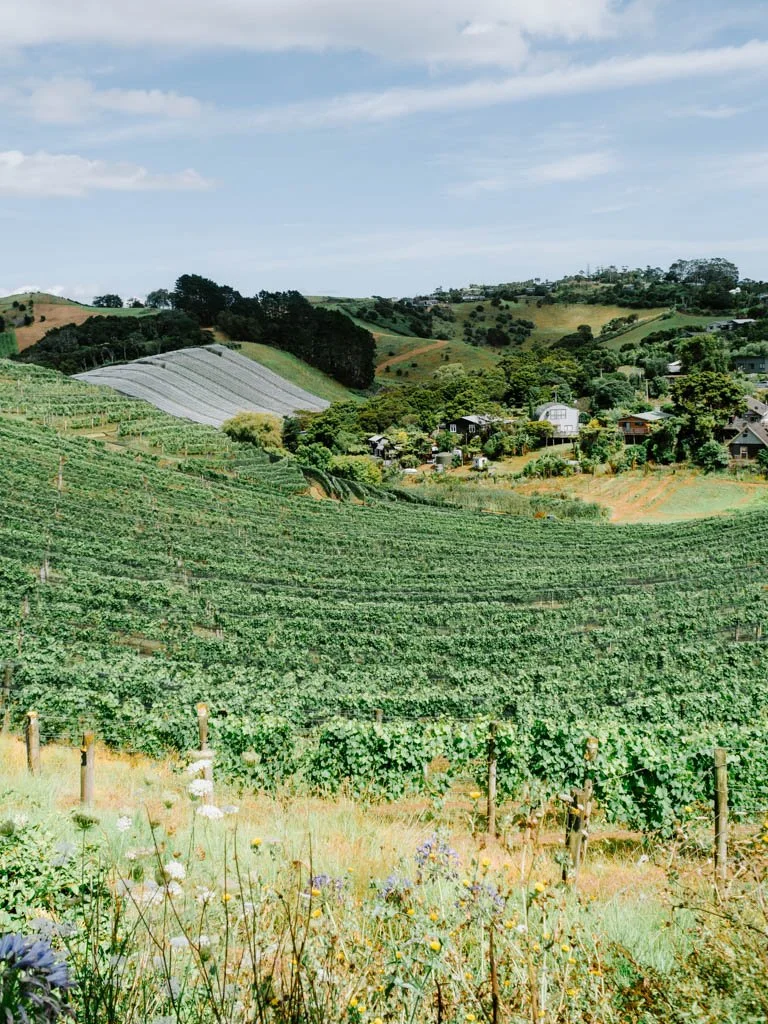Road trip the Coromandel Peninsula: A local’s guide to the best places to go and things to do
My home region has beautiful beaches and great walks to discover
Little Bay, in the far north of the Coromandel
I grew up on a Coromandel Peninsula dairy farm 10 minutes from Pauanui Beach.
Summer holidays meant swimming in the river that flows out of the Coromandel ranges, and roaming barefoot around tiny beach towns.
It took me a while to appreciate how beautiful the Coromandel is; probably around a decade. That’s about how much time I spent travelling the world, looking for perfect waves to surf, clear rivers to swim in, and beaches away from crowds.
It wasn’t until I came back home as an adult that I realised all of these things — and many more — are right here in the Coromandel.
Pauanui Beach, right down the road from where I grew up
Once a hippie haven, the Coromandel Peninsula these days is an enclave for the wealthy, with huge holiday homes of glass and steel lining most beachfronts. There are still remnants of the quirky characters that used to shape the Coromandel, though — there are still locals living off grid, and a little train running through the bush, and if you go far enough north there’s nothing but gravel roads and campgrounds.
Below, I have outlined a few of my favourite things to do in the Coromandel, if you were driving from Thames up the West Coast to Coromandel town, then down the other side of the peninsula via Whitianga and Hahei.
This is my local’s guide to the Coromandel.
First, some beautiful places to stay in the Coromandel
Because it is well worth planning your trip around these places to stay.
FEATURED STAY
Wairua Rainforest River Retreat
An exceptional place to stay, I really can’t recommend it highly enough. Tucked away in the forest, with a forest bath, a hot tub under the stars, and a fire pit, Wairua feels like an exclusive little piece of paradise.
FEATURED STAY
Bali Haven
A beautiful Bali-inspired garden tucked into native bush, close to Coromandel Town. I loved the outdoor fireplace and shower surrounded by ferns; this is an ideal nook for nature lovers.
Planning your Coromandel Peninsula road trip
You could whip around the Coromandel in a day. It only takes three hours to follow State Highway 25 from Thames up the coast to Coromandel Town, then around to Whitianga and on to Whangamata.
But, much of what makes the Coromandel special — white-sand beaches, native bush walks, and roads fringed by pohutukawa trees — require exploring off the main loop road.
Stopping for one or two nights in either Hahei or Coromandel town (or one night in each) will give you more time to slow down and enjoy the drive. Choose to spend more time around Hahei and the east coast if sandy beaches with great swimming appeals; opt for Coromandel town if you’d prefer to get to know the hippie side of the peninsula or get off the beaten track with an adventurous drive to the very north.
Port Jackson, at the very northern tip of the Peninsula
It’s doable to visit Fletcher’s Bay and walk the Coromandel Coastal Walkway as a day trip from Coromandel Town, but it is a long drive on gnarly roads.
If you have the luxury of time and a campervan, it’s well worth camping in Port Jackson — accommodation options are few and far between once you hit those gravel roads in the north of the peninsula. Campgrounds, on the other hand, are plentiful and wonderful.
Even with three days, you’ll need to skip a few spots, though. The ideal itinerary is at least a week long, with a few nights dedicated to each side of the Coromandel.
Below, I have outlined stops for an anti-clockwise trip around the Coromandel, starting with the east coast beaches.
The road to Fletcher Bay
A note on the Coromandel’s roads
Away from State Highway 25, many of the Coromandel’s roads are gravel, including the 309 road between Coromandel and Whitianga, the Tapu Coroglen road, and all of the roads north of Colville. These roads are often only one-way; the road to Fletcher Bay is particularly narrow, steep and has precipitous drops to the sea. If you’re an anxious driver, or piloting a large motorhome, avoid these routes.
Although SH25 is sealed, it is often narrow and has suffered in recent years from cyclone damage; an indication of how fragile this one ribbon of road around the peninsula can be. In peak summer summer holiday season (around Christmas and New Years), when Aucklanders flood the Coromandel, be prepared for delays.
Visit Cathedral Cove and Hot Water Beach, the star attractions of the Coromandel
By far the most popular destination on the Coromandel Peninsula is Cathedral Cove.
The nearest town is Hahei, and Hahei Beach itself is sublime. But, a little further along the coast, reached only by walking, kayaking, or a water taxi, Cathedral Cove dials up the beauty even further.
A walking track leads along the coast to the beach, which is framed by pale limestone and features a large stone archway across part of the beach. Between the rock formations and the dazzling blue water, Cathedral Cove looks like a scene from a magazine.
That means it attracts crowds aplenty, so it’s not a place to go if you’re seeking solitude.
CATHEDRAL COVE BOAT TOURS
There are plenty of options for seeing Cathedral Cove from the water. Most of these depart from Whitianga and tour along the Cathedral Cove coastline.
Of these, I highly recommend choosing Cave Cruzer (book direct / on Get Your Guide), a one-man show run by Brian, who has a deadpan sense of humour and a love for throttling his boat into spins.
The boat tours all follow a similar route, so it’s Brian’s personality that makes his tour stand out (and some of the others, like the Glass Bottom Boat, feed the fish in the marine reserve. I don’t agree with that approach, so wouldn’t recommend joining their tours).
If you would prefer to leave from Hahei, the zippy little Hahei Explorer is also a great option.
All of the boats will whisk you around the marine reserve.
You should note, though, that none of the boat tours land at Cathedral Cove. To reach the beach, you’ll need to get a water taxi.
If you want to visit a beach that is almost as beautiful as Cathedral Cove, but has nowhere near the vast numbers of visitors the more famous spot gets, check out Lonely Bay.
It’s only a short descent down some steps to the bay, then when you’re there you feel tucked away from the world.
The other hotspot — literally — near Hahei is Hot Water Beach.
Thanks to geothermal activity in one specific spot on this beach, at low tide (and two hours either side) you can take a shovel and make a shallow pool to lie in. The water that bubbles up from underneath is hot, sometimes scalding.
The area where you dig out the thermal pools isn’t huge, so you can expect to be wallowing cheek to jowl with others, but the novelty value is high.
Soak in geothermal water at the Lost Spring in Whitianga
The Lost Spring is one of the Coromandel’s loveliest hidden gems.
I would go so far as to say these are some of the best geothermal hot pools in the North Island.
The setting is colourful and kitschy. The pools are surrounded by faux rocks — there is even a faux cave — and the tropical gardens feel like a jungle.
The real selling point, though, is the poolside service. Order pina coladas, and servers will bring them to you in the pool — just swim up to collect them.
Detour to Opito and Crayfish Bay
Detour off Highway 25 and you’ll get to some of the most sublime beaches on the peninsula; Otama and the remote Opito.
The road out to Otama Beach and Opito Bay goes straight past Luke’s Kitchen, a stalwart of the Coromandel.
With beach views and a very laid back vibe, Luke’s is a popular place to stop. I found the pizzas there to be somewhat underwhelming, and the sangria weak — go for a local beer over the pitcher of sangria.
Luke’s is often very busy, as it’s the only place to get a meal for miles around, and there can be a wait for tables in summer. If you don’t mind grabbing a sandwich from the Kua Kawhe right next to Luke’s Kitchen, I suggest going for that option instead of waiting in line for food.
From Kuaotunu and Luke’s Kitchen, head up and over a hill over the true-to-Coromandel-type (steep, twisty, and gravel in patches) hill to Opito Bay. The long scythe of honey-coloured sand is backed by golden hills and contrasts delightfully with the bright blue water.
From the southern end of the beach, climb the steps to reach the top of an old Māori pa — defensive ditches are still visible — and enjoy views back across the bay.
In Coromandel Town, ride the perfectly unique Driving Creek Railway through native bush
One of the absolute best things to do in the Coromandel is take the Driving Creek Railway, a tiny mountain train that trundles through native bush to incredible views.
The railway was originally built back in the 80s by Barry Brickell, a potter who wanted to use the rails to transport wood, clay and sculptures up and down the hillside to his kiln, which was deep in the bush to avoid smoking out his neighbours.
With loveably ramshackle buildings, and ceramic sculptures emerging from in between native trees, Driving Creek gives the impression it has grown up out of the land; and I guess in a way it has, thanks to clay.
As well as the scenic railway, Driving Creek is still a working pottery studio for a rotation of artists. You can take part in a pottery class, or take home some pottery from the shop.
The little green trains that loop through the native forest are quirky and unique.
I have very fond childhood memories of the train and even now as an adult I love it. There’s nothing else like it in New Zealand.
Go for a short walk through a kauri grove, then plunge in a waterfall pool
About 10 minutes outside of Coromandel Town, down the 309 road (another of the Coromandel’s gravel roads) you’ll find the Waiau kauri grove.
A short walk of around 30 minutes takes you through the kauri trees, which were saved from logging by Coromandel residents; the peninsula has long been eco-minded, and I’m glad. It’s rare to see kauri trees of this size, and in this number, after they were so extensively logged from the peninsula.
The ideal swimming pool
Just down from the walk is the Waiau Falls, located right next to the road. If you’re brave, you can jump into the waterfall pool, which is easily the best swimming hole in the area.
Get well off the beaten track on a drive to the very north of the Coromandel Peninsula
The road looping around the Coromandel is just the beginning. If you have more time, or you like going to places that feel like the end of the world, I recommend heading north from Coromandel town.
The sealed road goes as far as Colville, a teeny tiny village with a general store — painted in bright colours — a post office, and a cafe, the Hereford ‘n a Pickle. Stop to check out the cafe, and stock up on homemade pickles for your picnic supplies; the cafe menu is simple, but this is the last place you can order food on the road north.
After Colville, the tarseal ends and you’ll be on gravel for a further 26 kilometres.
A word of warning; the road to Fletcher’s Bay is narrow and skirts along the cliff’s edge in places. You should be confident enough to navigate past other vehicles on a one-way gravel road, possibly with steep drop offs, and possibly needing to reverse in sections.
I am terrified of heights. As a passenger, most of the drive was spent gripping the armrests and focusing determinedly on the road ahead, not the perilous vertical drop to the rocks and water below.
I wouldn’t recommend attempting this drive in a large motorhome, or a very small rental vehicle.
If you do make the trip, you’ll be rewarded for making the journey with incredible views, and a sense of isolation and true adventure. Port Jackson Campsite is set on the very tip of the peninsula, with a vast beach and views of Great Barrier Island.
Neighbouring Fletcher Bay Campground is the starting point for the Coromandel Coastal Track, a highlight of the peninsula that has marvellous views of the craggy coastline, as well as dense bush with the occasional kaka wheeling above the canopy.
Loop around Waikawau Bay
If you don’t have the time, or the right wheels, to drive all the way to the north of the Coromandel, you can still go for a gravel-road adventure out to
Waikawau Bay. Take the road up to Colville, then hand a right towards the east coast.
Waikawau Bay is a beautiful beach, ideal for swimming and surfing. There is a spacious DOC campsite by the beach, so it’s another great spot to head for in a campervan.
Just over the hill at the south end of Waikawau Bay is Little Bay, spot that locals have done a great job of keeping secret. There are a few spots in the carpark for self-contained campervans to stay overnight.
For a scenic loop, head to Waikawau via Colville, then back down to Coromandel Town through Kennedy Bay. Stop at the Tokatea Hill Lookout for views out across both sides of the peninsula.
Go beyond Thames into the Kauaeranga Valley
Thames is an old gold mining town, now a hub for the wider farming region.
For the most part, you’re likely to just pass through Thames, either heading straight up the coast, or if you like hiking, into the Kauaeranga Valley.
Part of the Coromandel Forest Park, a river runs along the floor of the Kauaeranga Valley; alongside this are a string of campgrounds, and hikes through kauri groves.
In typical Coromandel fashion, the Kauaeranga Valley is accessed by a single lane, gravel road.
Most people will head in this way to hike to the Pinnacles, a climb up to a 360 panorama view from a rocky crag. It’s a 3 hour hike up, so you can get up and down in a day quite easily (although it is a steep climb in places).
It’s even better at sunrise and sunset — I have stayed overnight at the large DOC hut at the top to make the most of both. The hut is exceptionally well equipped (with showers, lights, cooking equipment) but also popular with school groups, so you could be sharing it with 40 odd youngsters.
There are other, shorter walks in the Kauaeranga, though, as well as some very pretty campgrounds. If you’re in a campervan, you could do a lot worse than to camp alongside the river at the Whangaiterenga Stream campsite.
Just up the road, the Cookson Kauri Walk is a lovely two hour hike. And in summer, Hoffman’s Pool is a delightful place for a dip.
Thank you for reading
You being here is what makes my life as a travel writer possible, so thank you. I hope this has been helpful and you have come away with a better idea of where to stop on a Coromandel road trip.
All of the photos and words (and spelling mistakes and other errors) on this page are mine, created without help from either AI or other humans.
My goal is to try and make sure your travels around New Zealand are the best they can be, in exchange for your support. Reading my posts, clicking my links, sharing with your friends; all of this helps me keep doing what I’m doing.
So, thank you again, and while you’re here, maybe take a look at a few other articles:
AUTHOR BIO
I’m a freelance travel writer from New Zealand with bylines in National Geographic Travel, Conde Nast Traveler, Travel + Leisure and more.
I’ve travelled up and down beautiful Aotearoa and I love sharing my recommendations for the best places to visit in New Zealand.
READ MORE






